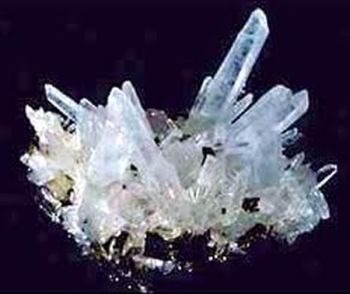Before Quartz
The wind-up watch is an amazing piece of technology itself! It is part of a continuous research-and-development effort that started at the end of the 14th Century. Over the years, different innovations made wind-up watches smaller, thinner, more reliable, more accurate and even self-winding!
The components that you find in today’s wind-up watches have been around for centuries:
- A spring to provide the power
- Some sort of oscillating mass to provide a timebase
- Two or more hands
- An enumerated dial on the face of the watch
- Gears to slow down from the ticking rate of the oscillating mass and connect the mass and spring to the hands on the dial
See How Pendulum Clocks Work for a description of these different parts.
By the end of the 1960s, the Bulova watch company made the first step away from the oscillating balance wheel — it used a transistor oscillator that maintained a tuning fork. This watch hummed at some hundreds of hertz (Hz, cycles per second) rather than ticking! Cogs and wheels still converted the mechanical movement of the tuning fork to movement of the hands, but two major steps had been taken:
- The replacement of the balance wheel and spring with a single-material resonator: the tuning fork
- The replacement of the wind-up main spring with a battery
A watch-making company in the late 1960s was bound to look for the next step — a technology that would give even better time keeping than the tuning fork. Integrated circuits were very new at the time, but the price was dropping rapidly and the number of transistors was growing. LEDs were also new on the scene. There were still a couple of problems to be solved: finding a new timing element and designing an integrated circuit that would use very little power to allow the watch to run on a tiny internal battery.
The Quartz Crystal
There was no problem with the choice of a timing element. The quartz crystal is possibly thousands of times better for timing than the tuning fork, and quartz crystals had been around for many years. Only the type and the frequency of the crystal needed to be chosen. The difficulty was in the selection of the integrated circuit technology that would function at sufficiently low power.
Quartz crystals have been in regular use for many years to give an accurate frequency for all radio transmitters, radio receivers and computers. Their accuracy comes from an amazing set of coincidences: Quartz — which is silicon dioxide like most sand — is unaffected by most solvents and remains crystalline to hundreds of degrees Fahrenheit. The property that makes it an electronic miracle is the fact that, when compressed or bent, it generates a charge or voltage on its surface. This is a fairly common phenomenon called the Piezoelectric effect. In the same way, if a voltage is applied, quartz will bend or change its shape very slightly.
If a bell were shaped by grinding a single crystal of quartz, it would ring for minutes after being tapped. Almost no energy is lost in the material. A quartz bell — if shaped in the right direction to the crystalline axis — will have an oscillating voltage on its surface, and the rate of oscillation is unaffected by temperature. If the surface voltage on the crystal is picked off with plated electrodes and amplified by a transistor or integrated circuit, it can be re-applied to the bell to keep it ringing.
For more detail: How Quartz Watches Work
The Quartz Crystal
There was no problem with the choice of a timing element. The quartz crystal is possibly thousands of times better for timing than the tuning fork, and quartz crystals had been around for many years. Only the type and the frequency of the crystal needed to be chosen. The difficulty was in the selection of the integrated circuit technology that would function at sufficiently low power.
Quartz crystals have been in regular use for many years to give an accurate frequency for all radio transmitters, radio receivers and computers. Their accuracy comes from an amazing set of coincidences: Quartz — which is silicon dioxide like most sand — is unaffected by most solvents and remains crystalline to hundreds of degrees Fahrenheit. The property that makes it an electronic miracle is the fact that, when compressed or bent, it generates a charge or voltage on its surface. This is a fairly common phenomenon called the Piezoelectric effect. In the same way, if a voltage is applied, quartz will bend or change its shape very slightly.
If a bell were shaped by grinding a single crystal of quartz, it would ring for minutes after being tapped. Almost no energy is lost in the material. A quartz bell — if shaped in the right direction to the crystalline axis — will have an oscillating voltage on its surface, and the rate of oscillation is unaffected by temperature. If the surface voltage on the crystal is picked off with plated electrodes and amplified by a transistor or integrated circuit, it can be re-applied to the bell to keep it ringing.

